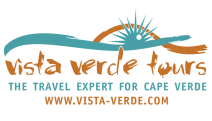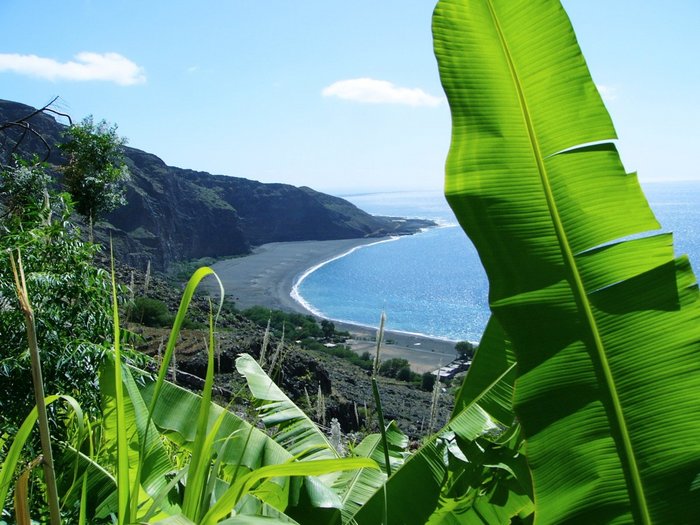Landscape and nature of the Cape Verdean Islands
Small country with rich diversity
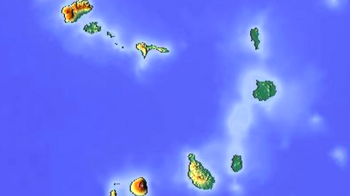
GEOGRAPHY
Cape Verde is located in the subtropical Atlantic Ocean around 600 km off Africa`s west coast. Being one of the smallest nations of the world with a total land area of 4.033 km² they are still somehow a “blank spot” on the world map.
Geographically the archipelago belongs to Africa and is considered to be a part of the islands of Macaronesia (which includes the Canary Islands, the Azores and Madeira) and is translated as “the islands of the blissful”. They are part of the African tectonic plate and are of volcanic origin.
Being an island nation Cape Verde has no common land border with any other country. The overall coastline totals 965 km, which is half of the German coastline. The shape of the islands is like a mirrored “C”. The N-S dimension is 300 km and the E-W dimension around 250 km.
The eastern islands are characterized by being very flat with desert-like landscapes and white sandy beaches, while the western islands are rather mountainous with peaks rising up to 800 m.
Out of the 10 bigger islands of the archipelago 9 are inhabited. The islands are divided by the north-east trade winds into the windward islands (“Ilhas de Barlavento”) which includes Santo Antão, São Vicente, São Nicolau and the sandy islands Sal and Boa Vista and into the leeward islands ("Ilhas de Sotavento“) which includes Brava, Fogo, Santiago and the sandy island Maio.
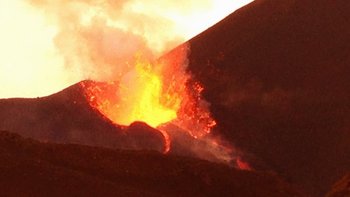
GEOLOGY
Cape Verde is completely volcanic in origin without any sedimentary formations. The flat islands in the east (Sal, Boa Vista and Maio) are geologically older than the western islands (Santo Antão, São Vicente, São Nicolau, Brava, Fogo and Santiago). The latter are way more shaped by volcanism than the eastern islands.
On the island of Fogo seismic activity can still be found today. The “Pico de Fogo” which is the highest point of the archipelago at 2.829 m above sea level last erupted at the end of 2014. The stratovolcano is surrounded by a so-called Caldera that makes this landscape very distinctive.
Through volcanic activity and continuous erosion many different kinds of landscapes developed in this relatively small area: from bizarre rock formations on Santo Antão, to wandering dunes on Boa Vista (“Sahara in the Atlantic”) and evergreen tropical valleys on Santiago and Santo Antão. For this reason Cape Verde provides a surprisingly rich diversity.
Another characteristic of the islands are the so-called Ribeiras, water courses that have been carved into the rocks over centuries. Nowadays they are dried-up and usually only have water after the rainy season in August/September.
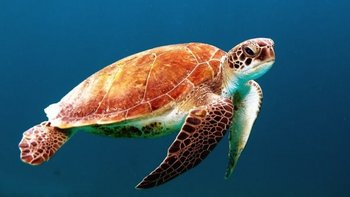
FLORA & FAUNA
Due to the fact that the islands have never been connected to the main continent, no other mammals besides the bat can be found here. Settlers introduced farm animals and brought with them rodents, reptiles and insects. Birds reached the archipelago by themselves!
Venomous and dangerous animals such as snakes or scorpions are almost non-existent and whilst the local centipedes may give a painful bite they are completely harmless! For ornithologists Cape Verde is very interesting as there are many migrating birds that make a stop on their journey to the south. Additionally, around 50 different species - some endemic - can be found on the islands all year round.
The marine life is much more interesting and varied. Sea turtles, dolphins and whales can be found almost all year round and for divers the rich and diverse aquatic world is still considered to be an insider tip.
Because of climatic conditions Cape Verde has a low diversity of vegetation. Originally being completely free of vegetation, today around 850 plant species can be found on the islands. Every island shows a different spectrum. On the mountainous islands the vegetation is rather colourful with tropical plants such as banana, mango, and many other citrus trees. Sugar cane and jacaranda are abundant. Wild aloe vera and agaves can be found on the waysides. On the desert islands mainly grasses and some palm tree species are common. Specifically the dragon tree on the island of São Nicolau is very particular.

